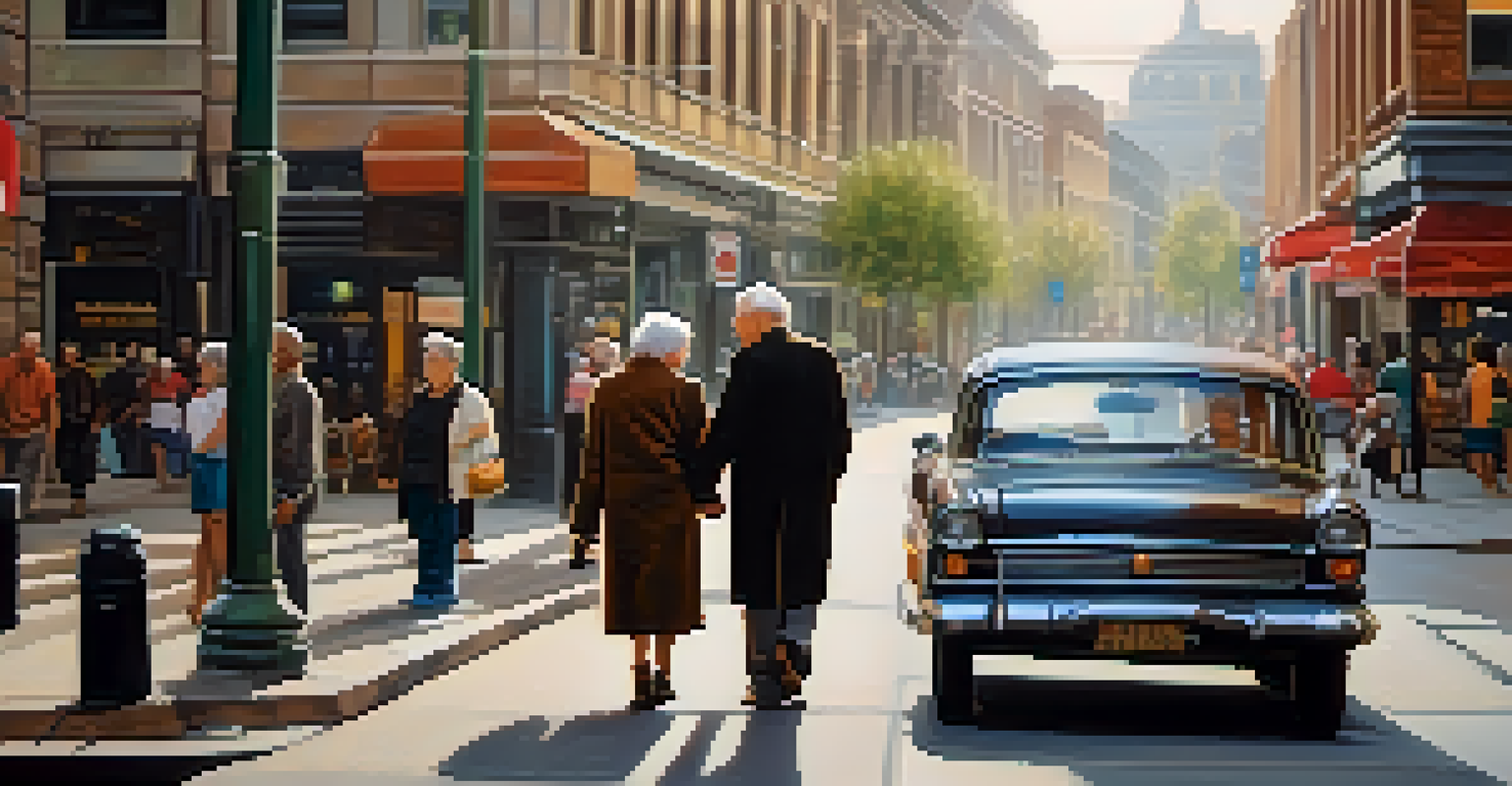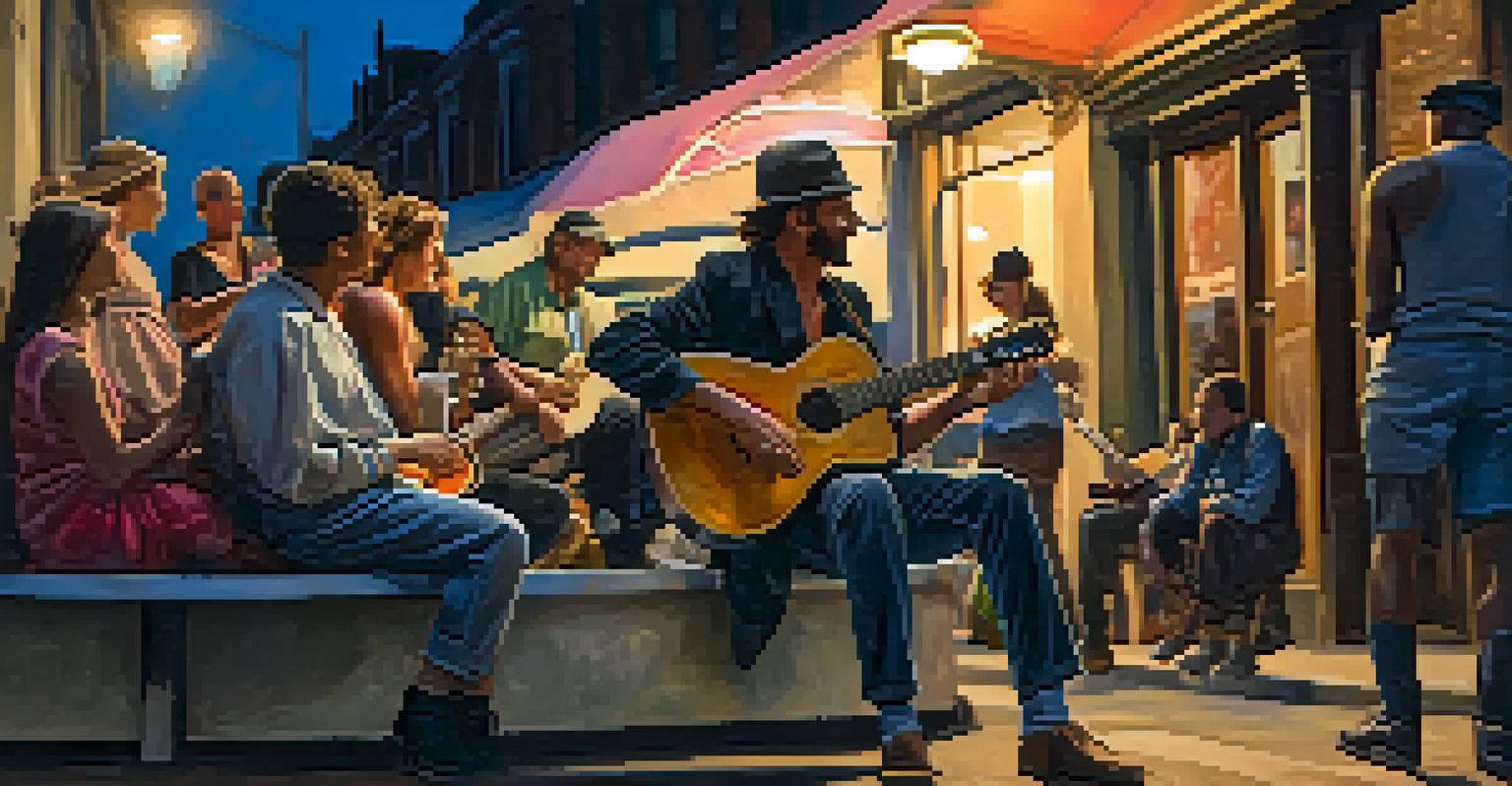Capturing Emotion: The Heart of Street Photography Explained

Understanding the Essence of Street Photography
Street photography is more than just snapping pictures in public spaces; it's about capturing the essence of human life. This genre is often spontaneous, allowing photographers to document moments that tell a story. Whether it’s a fleeting smile or a moment of solitude, each image can evoke deep emotional responses from viewers.
A photograph is a secret about a secret. The more it tells you, the less you know.
At its core, street photography thrives on the unpredictability of everyday life. Photographers need to be alert and ready to seize the moment, often blending into the environment to remain unobtrusive. This connection with the surroundings allows for authentic moments to unfold, showcasing real emotions in real time.
By focusing on the people and their interactions, street photography creates a narrative that resonates with viewers. It invites them to reflect on their own experiences and emotions, bridging the gap between the artist and the audience. This shared understanding is what makes the art form so powerful and relatable.
Why Emotion Matters in Street Photography
Emotion is the heartbeat of street photography, bringing life to images that might otherwise feel flat. When a photograph captures genuine feelings—joy, sadness, surprise—it transcends mere documentation and becomes art. Viewers are drawn to these emotional connections, often finding a piece of their own story within the frame.

Consider how a simple image of a child playing can evoke nostalgia in an adult, reminding them of their own carefree days. This emotional resonance is what makes street photography impactful; it connects us to our shared humanity. It’s this emotional thread that can turn a simple photo into a memorable moment.
Emotion is Key in Street Photography
Capturing genuine emotions transforms street photographs from simple documentation into powerful art that resonates with viewers.
Moreover, emotion can be a catalyst for social change. Powerful street photographs have the ability to highlight social issues and injustices, prompting viewers to engage with the world around them. By capturing raw human emotion, photographers can inspire empathy and action, making their work not just art but a call to awareness.
Techniques for Capturing Emotion
Capturing emotion in street photography often requires keen observation and timing. One effective technique is to look for candid moments where emotions are raw and unfiltered. Being patient and allowing scenes to unfold naturally can lead to stunning shots that convey genuine feelings.
Photography is the story I fail to put into words.
Another technique involves using composition to emphasize emotion. For instance, framing a subject against a bustling background can highlight their isolation or joy in the midst of chaos. This contrast can evoke a stronger emotional response and draw viewers into the narrative of the image.
Additionally, understanding light and shadow can dramatically enhance the emotional quality of a photograph. Soft, diffused lighting can create a warm, nostalgic feel, while harsh shadows can evoke tension or drama. By experimenting with different lighting conditions, photographers can add depth to their emotional storytelling.
The Role of Context in Emotional Photography
Context plays a crucial role in shaping the emotions captured in street photography. The setting, time of day, and even cultural background can influence how an image is perceived. A photograph taken in a bustling market will carry different emotional weight than one shot in a quiet park.
By considering the context, photographers can create more meaningful connections in their work. For example, capturing a couple sharing a tender moment in a busy city can evoke feelings of love amidst chaos, while the same couple in a serene landscape might evoke tranquility. Each setting tells a different story.
Context Shapes Emotional Perception
The setting and cultural background of a photograph significantly influence the emotions conveyed and the stories told.
Moreover, context can also involve social and political elements. A photograph taken during a protest can convey anger and determination, while one taken during a celebration can evoke joy and unity. Understanding the broader narrative helps photographers convey the emotions tied to specific moments in time.
Building Your Emotional Connection with Subjects
Establishing a connection with subjects is key to capturing authentic emotions in street photography. Approaching people with kindness and respect can help create a rapport that allows them to feel comfortable. When subjects feel at ease, they are more likely to express genuine emotions, leading to powerful photographs.
Sometimes, simply sharing a smile or engaging in brief conversation can open doors to deeper connections. This rapport can transform a mere photograph into a story that reflects the subject's personality and emotions. Remember, the heart of street photography is about the people and their experiences.
Additionally, being receptive to your surroundings and the emotions of those around you can enhance your ability to capture moments. By being an attentive observer, you can anticipate emotional exchanges before they happen. This foresight allows you to be ready to click the shutter at just the right moment.
Editing: Enhancing Emotional Impact
Editing plays a significant role in enhancing the emotional impact of street photographs. While capturing the right moment is crucial, post-processing can help bring out the emotions even more. Adjusting contrast, saturation, and cropping can all contribute to the overall feeling conveyed in the image.
For instance, increasing contrast can add drama to a photograph, while desaturating colors can evoke a sense of nostalgia or melancholy. The key is to edit in a way that complements the emotion you aim to portray, rather than overpowering it. Subtle changes can make a big difference.
Connection Enhances Authenticity
Building rapport with subjects allows photographers to capture more authentic emotions, resulting in compelling and relatable images.
Moreover, utilizing editing tools to highlight certain features can direct viewers’ focus to the emotional elements in the image. By drawing attention to a subject’s facial expression or body language, you guide the audience’s emotional journey. This thoughtful editing approach ensures that the viewer connects deeply with the image.
The Future of Emotion in Street Photography
As technology evolves, the future of street photography continues to shift, but the importance of capturing emotion remains constant. With advancements in camera equipment and editing software, photographers have more tools than ever to express feelings through their work. However, the essence of street photography—a genuine connection to the human experience—will always be vital.
Emerging trends, such as smartphone photography, also democratize street photography, allowing more people to share their emotional perspectives. This shift encourages diversity in storytelling, as various voices capture their unique experiences and emotions. The more varied the perspectives, the richer the narrative landscape becomes.

Ultimately, the future of street photography will likely blend traditional techniques with modern technology, all while keeping the focus on emotion. As photographers continue to explore and innovate, they will find new ways to engage viewers and evoke feelings, ensuring that the heart of street photography beats on.